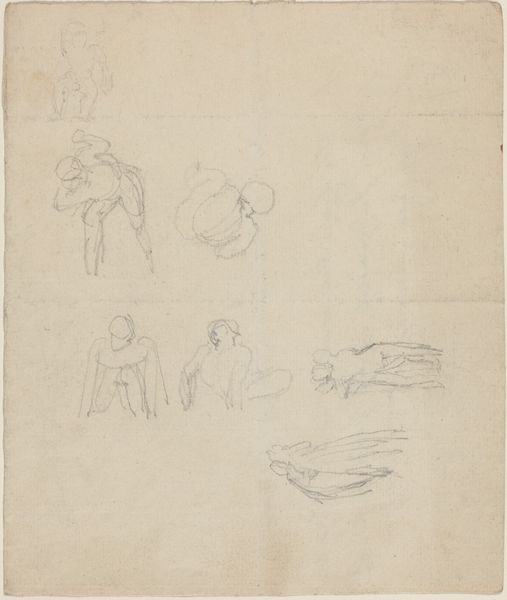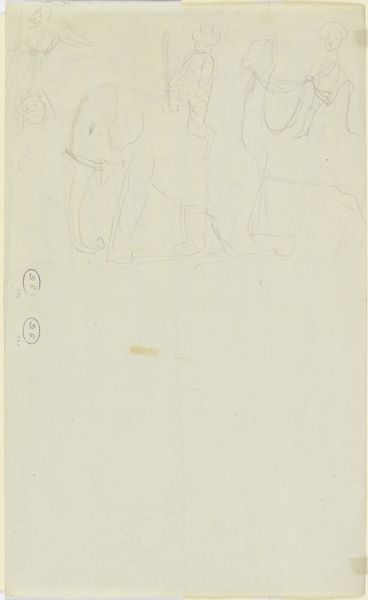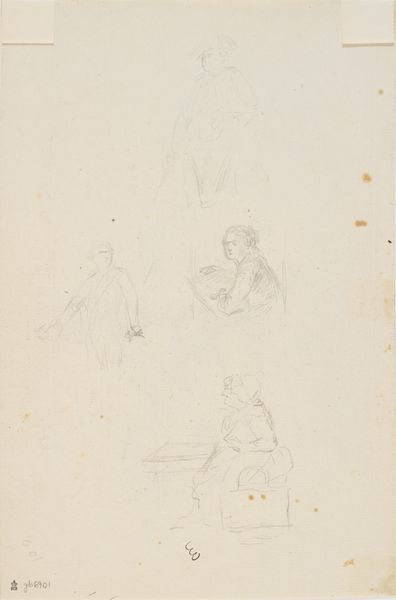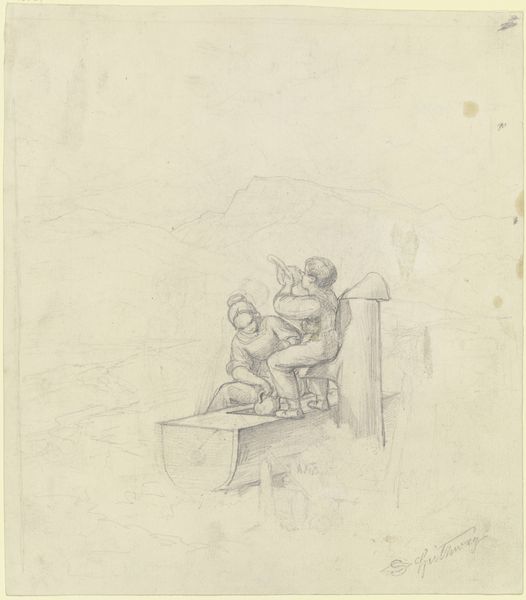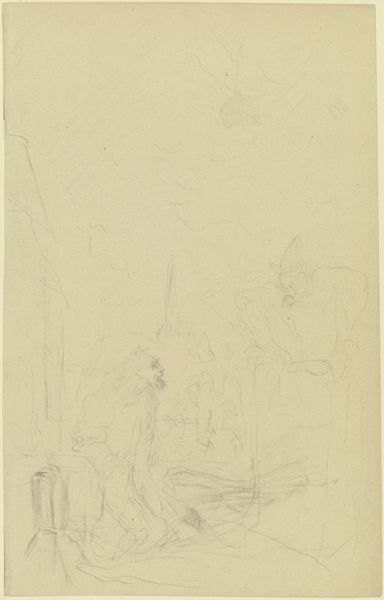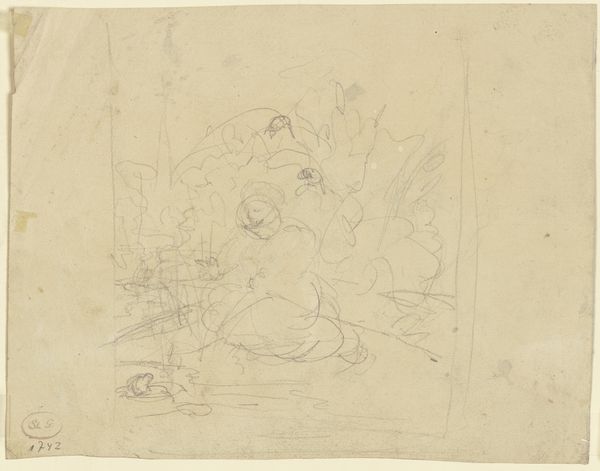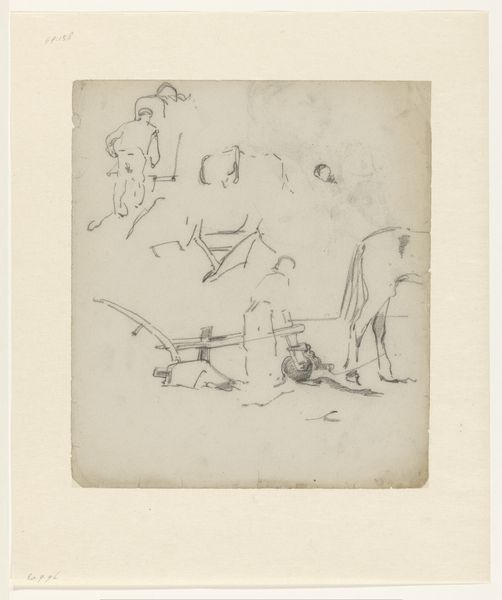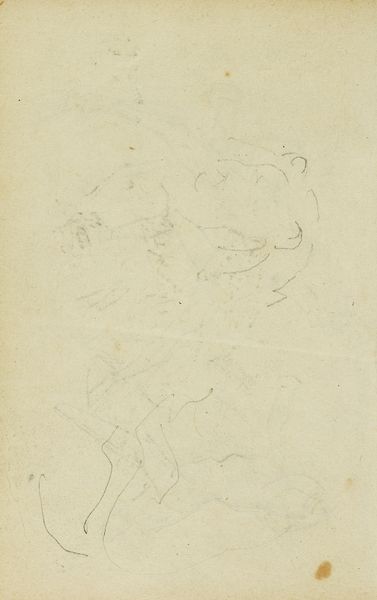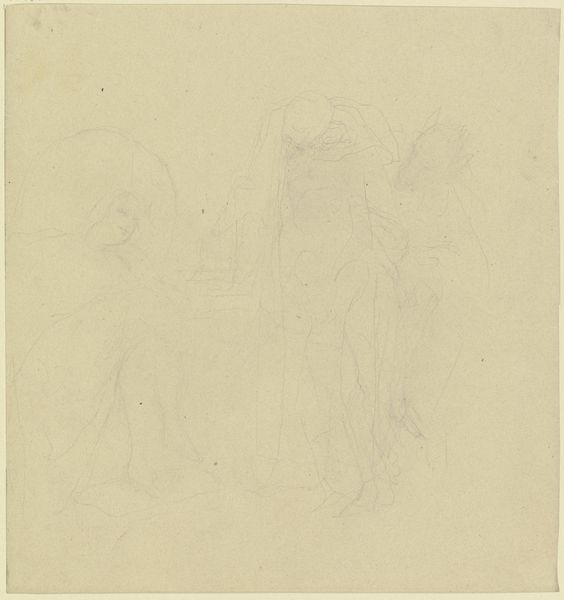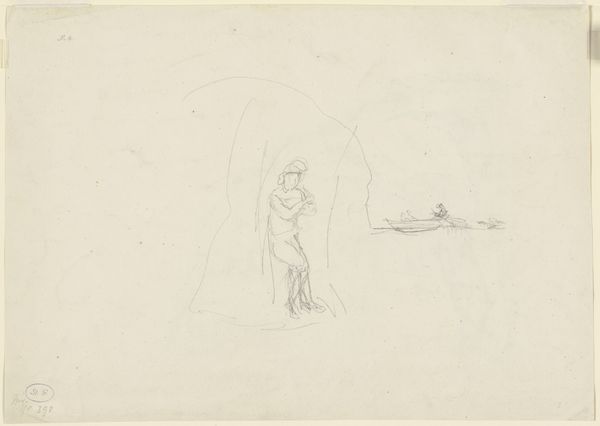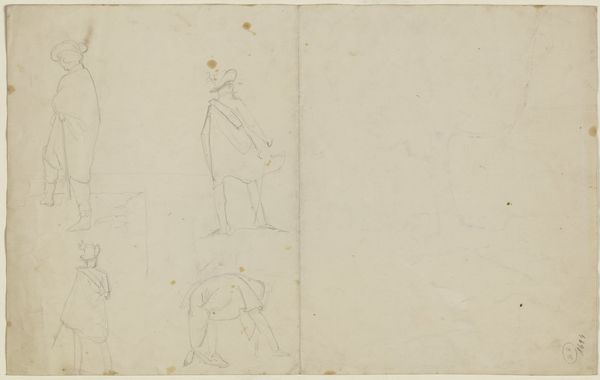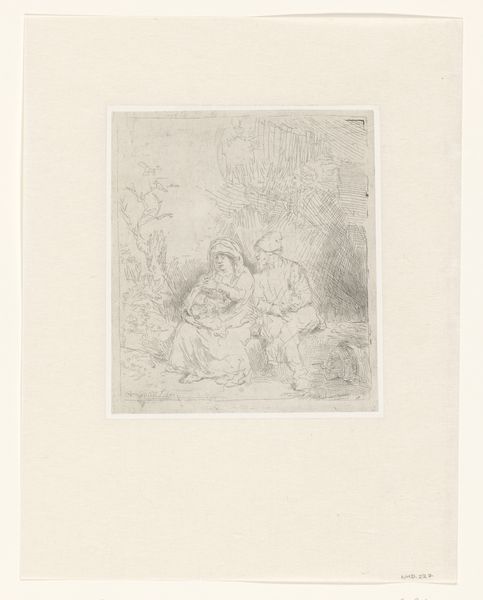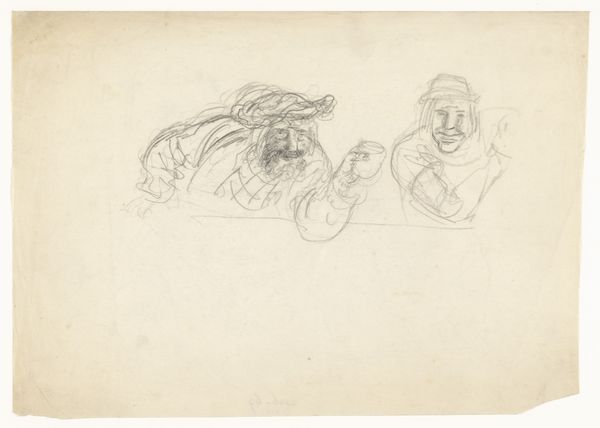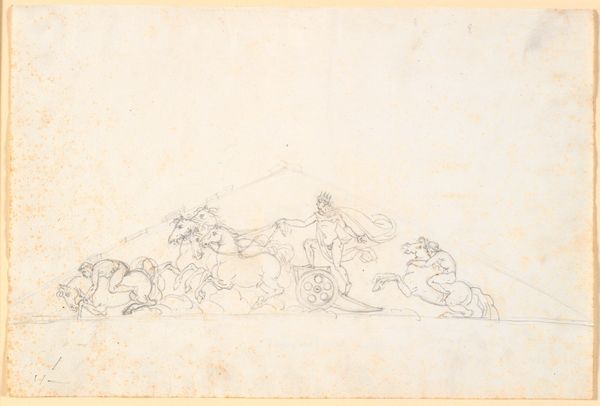
drawing, paper, pencil
#
drawing
#
narrative-art
#
figuration
#
paper
#
pencil
Dimensions: 225 mm (height) x 184 mm (width) (bladmaal)
Editor: This is "Three Studies for the Same Illustration as Recto," a 1921 pencil drawing on paper by Niels Skovgaard. It's intriguing how raw the sketches appear. They're not cleaned up, letting us see the artist's process. What do you see when you look at the materiality of this piece? Curator: I see the ghost in the machine, or perhaps better said, the labor in the lines. The pencil, humble and readily available, becomes the primary agent here. Consider the accessibility of drawing materials versus the elitism sometimes associated with painting at this time. These sketches reveal Skovgaard's engagement with narrative art, specifically how he's using preliminary studies to solve a compositional or storytelling problem. It's a glimpse into his material thinking. Editor: That's interesting, to think of the pencil itself as playing such a crucial role! So, you’re focusing less on the "art" itself and more on what enabled its creation? Curator: Precisely. We should ask ourselves: why pencil? Why this specific type of paper? What was Skovgaard trying to achieve with such economical means? Was it a rejection of academic grandeur in favor of a more grounded, almost folk-art approach? These material choices directly influence our understanding of his artistic intention and the piece’s overall meaning within the social context of post-war art. Editor: I guess I hadn’t considered it from that angle, viewing the artistic choice of materials as inherently shaping meaning. Curator: Right! We tend to get caught up in the imagery and miss the real message, that it is the physical elements of production of the art, or lack thereof, which reveal Skovgaard's artistic intentions. Editor: So, by examining the "how" – the process, materials, and social context – we unlock a deeper understanding of "why." Curator: Exactly. The pencil isn't just a tool; it’s a conscious choice reflecting the artist’s engagement with the socio-economic realities of art production and the desire to convey meaning in a tangible way. It adds another layer to this simple sketch.
Comments
No comments
Be the first to comment and join the conversation on the ultimate creative platform.
